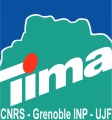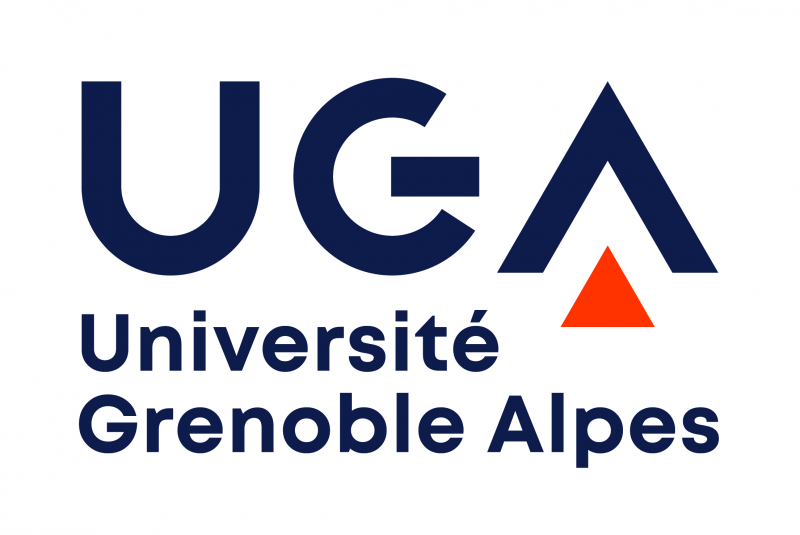TIMA (UMR 5159)
Laboratoire des techniques de l'informatique et de la microélectronique pour l'architecture des systèmes intégrés
(Laboratory for Techniques of Informatics and Microelectronics for integrated systems Architecture)
| TIMA |
 |
|
| Lab home-page : http://tima.imag.fr/tima/fr/index.html | ||
| Activity report : TIMA annual activity reports from 2005 to 2008 | ||
| AERES evaluation report : Report May 2010 (pdf, 406,70 ko) | ||
| Publications'URLs : TIMA's list of publications | ||
| SoC; NoC; SiP; robustness; fault tolerance; reconfiguration; self adaptive; MEMS; NEMS; asynchronous circuits; energy scavenging; energy aware design; safe and secured circuits; CAD and verification for MPSOC; formal methods for SoC design; mixed signal and RF design for test. | ||
| Themes | Robustness and formal methods for robustness analysis; fault tolerant and self-adaptive massively parallel multi-core architectures. Integrated devices; MEMS; asynchronous circuits and systems; smart CMOS vision sensors; non-uniform sampling and signal processing. Design and verification of System-on-Chip architectures; specification and implementation of hardware-dependent software; assertion-based verification and synthesis. Design-for-test and testing techniques for mixed-signal, RF, micro-system devices. | |
| Highlights and distinctions | Mickhael Nicolaidis | Cisco Foundation award 2011 |
| Regis Leveugle | Cisco Foundation award 2009 | |
| AERES assessment | "The academics and full time researchers of TIMA are doing remarkable research works, from the viewpoints of their scientific positioning, their impact, and the industrialization of their results. The evaluation committee was particularly impressed by the pertinent vision of the academics and full time researchers of the Laboratory, their actual yet measured risk taking that opens new scientific perspectives. Thanks to the quality of its scientific production, of its partnerships, and of its research results industrialization, TIMA is an unavoidable actor in the STIC (science and technology of information and communication) and microelectronics domains." | |
| Faculty | 17 | |
| Researchers | 6 | |
| Habilitation | 13 | |
| "Produisants AERES" | 96% | |
| PhD students | 55 | |
| Publications | Journals : 15 | |
| Conferences: 81 | ||
|
Funding K€ Mean value per year |
2 500 | |
The TIMA scientific program is organized in four themes : TIMA is a public joint research laboratory of CNRS, Grenoble-INP and UJF. TIMA is a multinational team, with members and interns from all over the world. The research topics of TIMA cover the specification, design, verification, test, CAD tools and design methods for integrated systems, from analog and digital components on one end of the spectrum, to multiprocessor Systems-on-Chip together with their basic operating system on the other end.
TIMA members are in the committees of the prominent conferences and scientific meetings of their domain and have PC or General Chair responsibilities each year (e.g. PC chair of VLSI-SOC'11, General chair and organization of European Test Symposium 2012). They founded and continuously contribute to the annual research schools SERESSA, MPSOC and FETCH (e.g. organization of MPSOC'11 and FETCH'12). They participate in a large number of European research activities, and have established scientific agreements with Universities and research laboratories worldwide.
TIMA anticipates the models, methods, designs and design tools for the microelectronics and CAD industry in the years to come. TIMA established industrial cooperation at the local (E2V, IRoC Technologies, CEA-LETI, Temento Systems, Dolphin Integration, STMicroelectronics, Schneider Electric), national (Thalès Communications, NXP, Bull, Magillem Design Services, Thomson R&D, Astrium, Airbus, EADS, Bull, Alcatel, France Telecom) and international (Infineon, Philips, Target Compiler Technologies, Certess, etc ...) levels. In 2009 and 2011, TIMA obtained a CISCO Foundation Research Grant (USA), as recognition of the results obtained in circuit security and reliability. On average, three to four patents are filed each year (e.g. in 2009: a NoC 3D circuit, a micro-fluidic device, a multi-port memory device). TIMA is at the origin of seven spin-off companies. The most recent ones: TIEMPO, created in 2007 to industrialize the asynchronous circuit design technology invented by the CIS group; UroMems created in 2011 to develop the urinary sphincter sensor from the Bio-Mems group.


 Sign in
Sign in














